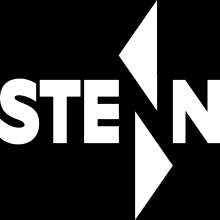As the holiday season approaches, the stakes are higher than ever for Amazon sellers aiming to capitalize on the Q4 shopping frenzy.
Winning peak seasons requires not just savvy marketing but also strategic inventory financing and management. Securing the necessary financing to fund large inventory orders is crucial to avoid stockouts and missed opportunities during this lucrative period. In fact, according to a recent study, businesses that adequately stock their inventory for peak seasons can see up to a 25% increase in sales compared to those that fail to prepare.
Without sufficient inventory, you risk losing out on millions of potential sales, especially during events like Black Friday and Cyber Monday. For example, a popular toy company that couldn’t keep up with demand in 2023 missed out on an estimated $2 million in sales during the holiday season due to stock shortages.
The key is to hit the sweet spot between overstocked and stockouts to remain profitable. You should also explore various inventory funding options to ensure you have the capital needed to meet increased demand. Planning ahead and securing the right financing can help you to turn peak seasons into a significant growth opportunity.
Here’s how to get your Amazon business ready for peak selling seasons.
1. Plan for the Perfect Inventory Balance
Consumer spending is often unpredictable, influenced by inflation, trends as well as the lingering effects of the pandemic. But despite this, many consumers splurge during the holidays. As buying action might be delayed until later in the season, planning while having sufficient working capital to buy stock is crucial.
Analyze Past Sales Data
Historical sales data is a goldmine of insights. Analyzing this data helps you understand sales patterns, identify peak periods, and forecast future demand more effectively.
Steps to Analyze Sales Data:
- Gather Data: Collect sales data from previous years, focusing on peak seasons.
- Identify Trends: Look for patterns in sales volume, popular products, and buying cycles.
- Segment Data: Break down data by product category, time period, and customer demographics to get detailed insights.
- Adjust for External Factors: Consider external factors like economic conditions, market trends, and promotional activities that might have influenced sales.
By understanding the past, you can make informed decisions about inventory levels and develop the right stock strategy for the upcoming peak season.
SoStocked by Carbon6 offers a Demand Plan upload feature, enabling you to generate future sales velocity forecasts for a product or group of products directly within the software’s Forecast page.
Use Sales Forecasting Tools
Investing in sales forecasting software can be one of the most valuable tools in your business’s arsenal. Analyze past sales data, market trends, and consumer behavior to predict future demand more accurately. Having this foresight can help you plan your inventory needs more effectively, reducing the risk of both overstocking and stockouts.
Benefits of Sales Forecasting Tools:
- Improved Accuracy: Reduce guesswork and improve the accuracy of your demand forecasts.
- Real-Time Adjustments: Make real-time adjustments to inventory levels based on changing demand.
- Scenario Planning: Prepare for different scenarios (e.g., best-case, worst-case) and plan inventory accordingly.
Implement a Just-In-Time (JIT) Inventory System
A Just-In-Time inventory system minimizes inventory holding costs by receiving goods only as they are needed. This approach reduces the risk of overstocking and helps maintain a lean inventory.
Benefits of JIT:
- Reduced Holding Costs: Lower storage costs by minimizing excess inventory.
- Increased Efficiency: Streamline operations and reduce waste.
- Improved Cash Flow: Free up capital that would otherwise be tied up in inventory.
However, JIT requires a reliable supply chain and precise demand forecasting to avoid stockouts.
Plan for Buffer Stock
While JIT is efficient, having a buffer stock buffer is essential to handle unexpected spikes in demand or supply chain disruptions. Buffer stock ensures you can meet customer demand even when there are unforeseen changes.
How to Calculate Safety Stock
- Determine Lead Time Demand: Calculate the average demand during the lead time.
- Assess Demand Variability: Understand the variability in demand during the lead time.
- Calculate Safety Stock: As an outline use the formula:
Imagine you’re selling a popular product on Amazon, and you want to ensure you don’t run out of stock during a high-demand period.
Given Data
- Maximum daily use: 50 units
- Maximum lead time: 20 days
- Average daily use: 30 units
- Average lead time: 15 days
Buffer Stock Calculation
(Maximum daily use×Maximum lead time)−(Average daily use×Average lead time) = Buffer Stock
Plugging in the values:
(50×20)−(30×15)
1000−450 = 550 units
In this example, the buffer stock required is 550 units. This means you should keep an additional 550 units on hand to protect against stockouts during periods of maximum lead time and daily use. This extra inventory ensures you can meet customer demand even if your supplier takes longer than usual to deliver or if sales are higher than expected.
By planning for buffer stock, you can avoid stockouts and maintain customer satisfaction.
2. Take Action during the Peak Season

To navigate the holiday season successfully, focus on these three elements:
Utilize Partner Tools
Many online marketplaces and suppliers offer tools to help with inventory management. Amazon, for example, provides various analytics and forecasting tools that can help you anticipate demand and manage your inventory more effectively. Leveraging these resources can give you a significant advantage.
Consider using SoStocked by Carbon6 to prevent stockouts and overstocking during peak seasons by leveraging its advanced forecasting tools. By analyzing historical data and considering seasonality, SoStocked helps sellers accurately predict demand, ensuring they order the right amount of stock at the right time. The platform also calculates buffer stock to protect against unexpected demand spikes or delays, helping sellers maintain optimal inventory levels without overcommitting capital.
Supplier Relationships
Building a strong relationship with suppliers is often overlooked but can be the most valuable aspect of your business. By maintaining open lines of communication, you can stay informed about potential delays or issues that could affect your inventory. You need to take a proactive approach so you’re aware of oncoming issues and make adjustments before problems escalate.
Agile Operations
Implementing agile practices in your operations can also enhance flexibility. This might involve regularly reviewing and adjusting your inventory levels based on current sales data, or being ready to pivot quickly if market conditions change. Agile operations help you stay responsive and resilient.
3. Add Financial Muscle to Your Hustle
Working Capital
Access to working capital is crucial. It allows you to prepare for and respond to buying patterns. Consider funding options like revenue-based financing, which provides funding based on a percentage of revenue. Inventory financing companies like Stenn offer up to $10 million in working capital in as little as 48 hours after approval.
Revenue-Based Financing (RBF)
Unlike traditional loans, revenue-based financing adjusts with your sales, making it a more flexible option. This type of financing ensures you have the funds needed to stock up before the peak season without the pressure of fixed repayments.
Benefits of RBF
- Performance-based: Weekly or monthly repayments are directly proportional to the business’ revenue, meaning payments are reflective of what the business can afford.
- No fixed repayments: The performance-based model means monthly repayments scale up and down with the business’ revenue.
- Non-dilutive: Get funding without relinquishing ownership or control of your business, leaving you to only pay what’s owed, based on your revenue.
- Zero collateral: RBF agreements are based on performance and therefore preempt that some months may be slower. For this reason, the business does not need to pledge any collateral or assets against the agreements.
- Quick and simple application: Compared with traditional loan agreements, RBF agreements are quick to process and businesses can access capital within 48 hours of documents being signed.
Other Types of Inventory Financing
As an Amazon seller, having enough inventory to meet demand is crucial, especially during peak seasons. Inventory loans can help you maintain adequate stock levels without straining your cash flow. Here’s a breakdown of different types of inventory financing and how they work.
Traditional Inventory Loans
These are standard loans provided by banks or financial institutions. The loan amount is usually based on a percentage of your inventory’s value, often around 50-80%. You pay back the loan over time with interest. Traditional inventory loans are ideal for businesses with established credit histories. According to the Federal Reserve, about 38% of small businesses rely on traditional loans for financing, making them a popular option for securing inventory.
Revolving Lines of Credit
A revolving line of credit gives you flexible access to funds up to a set limit, allowing you to draw and repay as needed. This is particularly useful for seasonal businesses that need to restock inventory quickly. The interest is only charged on the amount borrowed, not the full credit line. A 2023 survey by QuickBooks found that 25% of small businesses use lines of credit to manage cash flow.
Asset-Based Lending (ABL)
ABL, or loan against inventory, uses your stock as collateral to secure financing. The lender evaluates your inventory’s value and provides a loan based on that assessment. This option is beneficial for businesses with valuable inventory but may struggle with cash flow. The International Factoring Association reports that ABL accounts for approximately 20% of financing for small and mid-sized businesses.
Merchant Cash Advances (MCA)
MCAs provide a lump sum of cash in exchange for a percentage of future sales. This type of inventory financing is faster than traditional loans, often with minimal credit checks, but it comes with higher fees. MCAs are popular among ecommerce sellers needing quick cash for inventory but should be used cautiously due to the high cost.
Purchase Order Financing
This loan type involves getting an advance based on confirmed purchase orders from your customers. The inventory financing lenders pay your supplier directly, allowing you to fulfill large orders without upfront cash. According to Fundera, about 9% of small businesses use purchase order financing, making it a niche but effective option for growing businesses.
Each type of inventory financing serves different business needs. Whether you choose a traditional loan, a line of credit, or another option, understanding how these financing types work can help you make informed decisions to keep your business well-stocked and ready for peak seasons.
Secure Inventory Financing with Best Inventory Management Practices
Q4 is fast approaching, and the strategies you implement today can make or break your success during the most lucrative time of the year. Ensuring you have the right inventory levels is crucial, and this requires both strategic planning and securing the necessary financial resources.
Whether you opt for traditional inventory loans, revolving lines of credit, or other innovative financing solutions, the goal is the same: to maintain a perfect balance between supply and demand.
By utilizing inventory forecasting tools like SoStocked by Carbon6 and fostering strong supplier relationships, you can better anticipate your inventory needs and avoid the pitfalls of stockouts or overstocking. The right mix of financial backing and proactive inventory management can position your business to maximize profits during peak selling seasons, turning holiday traffic into sustained growth.
Prepare now by choosing the inventory financing options that best suit your business, and leverage technology to streamline your inventory processes. With the right approach, the holiday season can become a powerful catalyst for your business’s long-term success.
Apply for revenue-based funding with Stenn today or connect with them on LinkedIn.




